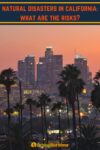Over 39 million people live in California. Many of these people have experienced natural disasters in the state firsthand. However, many don’t realize just how many different natural disasters can occur in the state, or how the risk for some disasters is increasing.
Here we will go over what natural disasters occur in California, the worst natural disasters to hit the state since 2000, and what can be done to prepare.
Also read: Types of Natural Disasters
Is California At Risk of Natural Disasters?
California has a very high risk of natural disasters compared to the rest of the country. There have been 285 disaster declarations in California since 2000. Of these, 38 were Major Disaster Declarations. There were 34 disaster events affecting California, which caused more than $1 billion in damages.
Since 2000 in California, there have been:
- 285 disaster declarations
- 38 Major Disaster Declarations
- 34 events that caused $1 billion or more in damages
Worst Natural Disasters in California Since 2000
Since 2000, California has been hit by numerous major wildfires and droughts. Collectively, these have caused hundreds of billions in damages and deaths.
The worst to hit California directly were the 2018 wildfires. These fires destroyed more than 18,500 buildings and burned over 450,000 acres. The estimated cost of the wildfire disaster is $27.8 billion, and there were 106 fatalities.
Worst Natural Disasters in California By Cost (Since 2000)
- 2012 Drought and Heat Wave: $38.7 billion
- 2018 Western Wildfires: $27.8 billion
- 2017 Western Wildfires: $21.4 billion
- 2020 Wildfires: $18.4 billion
- 2002 Droughts $14.9 billion
Worst Natural Disasters in California By Deaths (Since 2000)
- 2021 Western Drought and Heat Wave: 229 deaths
- 2000 Drought and Heat Wave: 140 deaths
- 2012 Drought and Heat Wave: 123 deaths
- 2022 Drought and Heat Wave: 117 deaths
- 2018 Western Wildfires: 106 deaths
*Cost and death tolls are for the entire disaster, including in other states affected.
What Natural Disasters Are Common in California?
1. Heat Waves and Drought
Heat waves frequently occur in California, and the risk of heat wave disasters is only increasing. In the 1960s, California only had an average of 4 heat waves per year, lasting approximately 4 days each. By 2020, this number had increased to nearly 10 yearly heat waves lasting 6 days on average.
These heat waves are responsible for numerous deaths and heat-related illnesses. While it is difficult to calculate precisely how many people die due to heat waves in CA, recent estimates put the number at 390 per year.
In addition to causing illness and death, heat waves cause numerous other problems in California.
The main problem is that residents need to use air conditioning to deal with the heat, which strains the power grid. To make matters worse, the heat physically impacts the power grid, making it run less efficiently and more prone to failure. As a result, California regularly has to implement rolling power outages during heat waves to save the grid.
Record Temperatures in California:
Heat waves have always been part of California’s history. However, in the past decade, there have been record-breaking high temperatures in many parts of the states. Here are just some of the record-high temperatures in California.
- Los Angeles Downtown Area: 113F (2010)
- Long Beach: 111F (2010)
- Pasadena: 115F (2020)
- Santa Monica: 118F (2020)
- Burbank: 119F (2000)
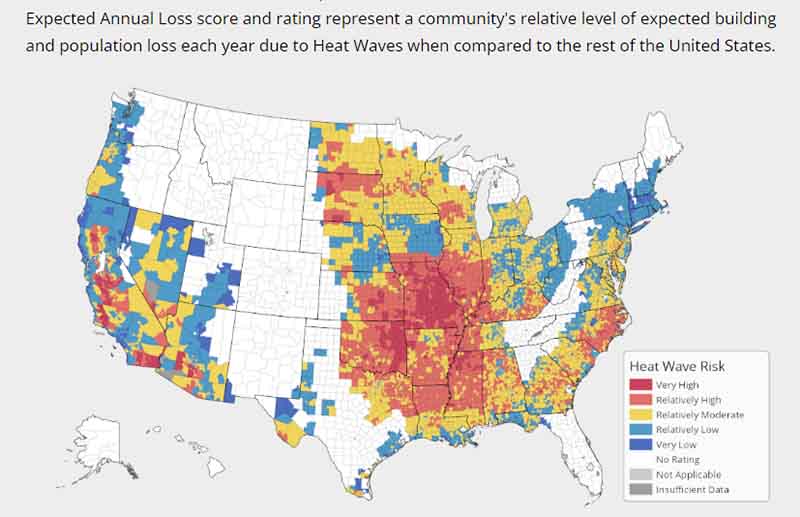
2. Wildfires
Wildfires and heat waves are California’s most common and destructive natural disasters. In recent years, the state has averaged over 7,800 fires per year, destroying over 1,223,000 acres and 1,270 structures.
With heat waves increasing in California, the risk of wildfires is only getting worse. One analysis shows that over 405,000 residences are at “high” risk of wildfire, and 240,000 are at “extreme” risk. This is more residences at risk than in any other state.
In addition to destroying homes, wildfires in California subject people to poor air quality. Millions of people in the state have been affected by hazardous air for weeks while fires burned.
Read: How to Prepare for and Survive a Wildfire
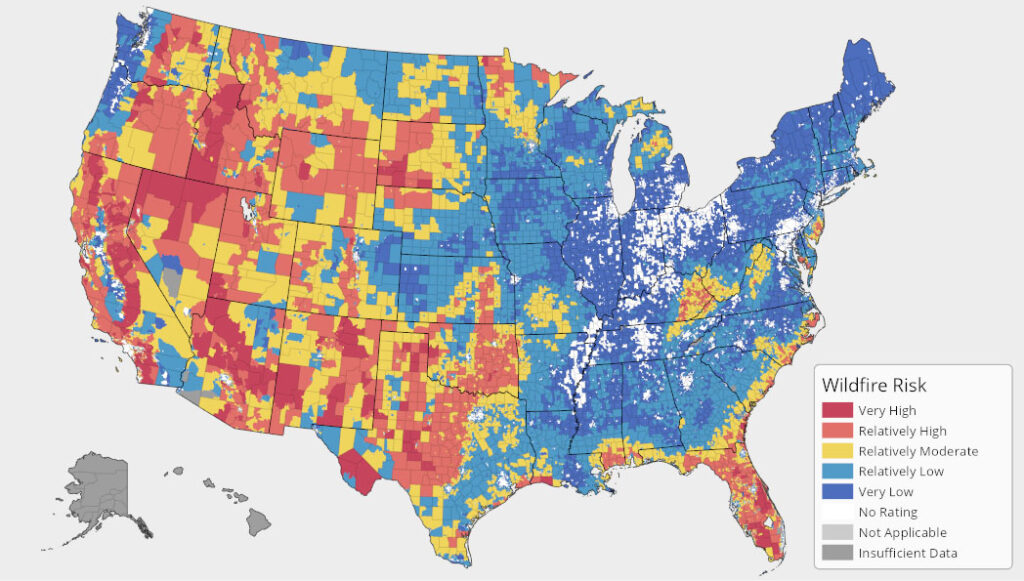
Worst Wildfires in California’s Recent History
Below are the worst wildfires in California in terms of acres burned, cost, and structures destroyed.
August Complex Fire (2020) – Most Acres Burned
In terms of acres burned, the August Complex Fire was the worst wildfire in California. It started as 38 separate wildfires in the Mendocino National Forest and grew into a “gigafire.”
The fire burned over 1 million acres and caused $319.8 million in damages. However, because the fire was in a remote area, it did not destroy many structures.
Camp Fire (2018) – Costliest Wildfire
In terms of cost, the Camp Fire in Northern California is the worst wildfire in the state. It consumed over 150,000 acres of land, destroyed almost 19,000 structures, forced over 52,000 people to evacuate, and caused 85 deaths. The total cost of the wildfire was $16.65 billion.
Cedar Fire (2003) – Most Structures Destroyed
The Cedar Fire broke out in San Diego County in 2003. It burned for two months before it was contained. It destroyed over 2,800 structures and 273,000 acres of land during that time. It also caused 15 deaths, which ties it with the North Complex of 2020 as the most deadly wildfire in California. The total cost of the wildfire was $1.3 billion.
3. Earthquakes
Along with Alaska, California is the state that experiences the most earthquakes in the USA and is most likely to experience earthquakes that cause damage.
The USGS estimates that Southern California has approximately 10,000 earthquakes each year. Other estimates put it at one earthquake every three minutes – or more than 175,000 earthquakes yearly!
While most of these earthquakes are too small to feel, California regularly has earthquakes that cause damage. The state can expect two or three earthquakes of magnitude 5 or higher yearly.
Also Read: Earthquake Survival Tips
Worst Earthquakes in Recent California History
Since 2000, California has declared disaster five times due to earthquakes. These events were:
- July 2019 Ridgecrest earthquake: A magnitude 6.4 earthquake struck near Searles Valley. The next day, a magnitude 7.1 earthquake struck. It could be felt as far away as Sacramento. The tremors caused more than $1 billion in damages and left many people without power or water service for days.
- August 2014 South Napa earthquake: This magnitude 6 earthquake struck approximately six miles from Napa. The quake caused $1 billion in damages, injured dozens of people, and left 30,000 without power.
- April 2010 Baja California earthquake: The quake started several days earlier with mag 3 to 5 foreshocks. The main quake had a magnitude 7.2 earthquake and lasted nearly 89 seconds. There were also several large aftershocks. Water mains broke, an airport had to be evacuated because of gas leak concerns, and power outages occurred in the area. The total damages were over $1 billion, and at least 2 people died.
- December 2003 San Simeon earthquake: The mag 6.6 earthquake hit the San Simeon region, which had many old, unreinforced buildings. Because of this, two people died when buildings fell on them.
- September 2000 Yountville earthquake: This quake was magnitude 5 and caused damage to many of the older, unreinforced buildings in the area. The total damages were upwards of $50 million.
Risk of the “Big One”
The “Big One” is the name for an earthquake with a magnitude 8 or higher, which could happen in California. If this earthquake were to occur, it could cause an estimated $200 billion damage.
Experts hypothesize that skyscrapers would topple, thousands of people would be killed in the damage, and hospitals would be overwhelmed with injuries. Further, there would be severe damage to California’s infrastructure. Roadways wouldn’t be passable, and power and water lines would be down. Gas line leaks would result in widespread fires.
The last time California experienced a huge earthquake was in 1906. This was a mag 7.8 quake that hit San Francisco and killed 3,000 people, and displaced nearly 250,000 people. It’s impossible to predict when an earthquake will occur, but the USGS estimates there is a 7% chance that a magnitude 8 quake will hit California in the next 30 years.
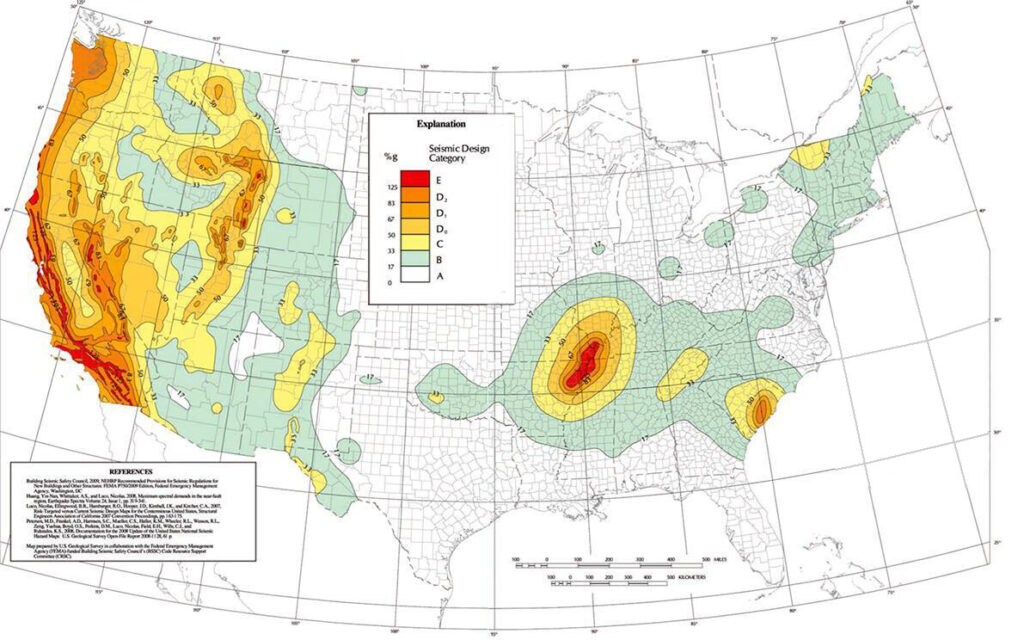
4. Floods and Mudslides
Floods are another common natural disaster in California. Every county in California has experienced a flood disaster, with the South Coast area, particularly at risk. An estimated 20% of all Californians are at high risk of floods.
Even dry areas of California are at risk of flooding in California. The dry soil can’t absorb the excess water when heavy rains hit these areas. This causes massive mudslides and flash floods.
Flooding in California can also overwhelm the sewer systems. The water supply, roadways, and power stations are also at risk of disruption, meaning thousands of people can be left without essential utilities.
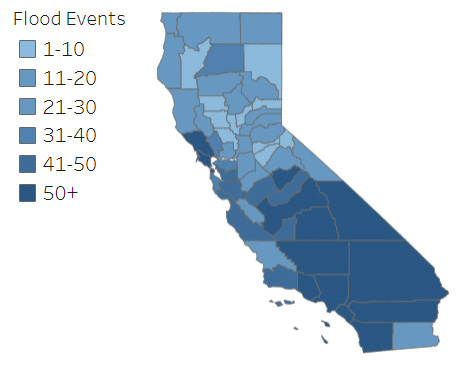
Worst Floods in California’s Recent History
Since 2000, there have been 2 floods in California that caused $1 billion or more in damages. The February 2017 floods in northern and central California caused $1.8 billion in damages when excess rainfall and flash flooding damaged San Jose and other communities. The Oroville Dam was affected, and 188,000 people who lived downstream had to be evacuated.
The January 2021 major flood occurred when the state received large amounts of rainfall. Wildfires were burning at the same time, which caused mudslides and debris flows.
In addition to these $1 billion floods, California has had to declare an emergency multiple times because of floods. The risk is only expected to get worse because of climate change.
Risk of an “ArkStorm”
While California’s potential “Big One” earthquake gets the most attention, the state is also at risk of a megaflood which experts have dubbed the “ArkStorm.”
The ArkStorm would occur if a significant storm hit California. The dams, levees, and other infrastructure designed to keep floods away from cities were built decades ago – before climate change had taken its toll.
These structures might not hold up, causing massive flooding in major cities. Sacramento, Modesto, Stockton, and Fresno are the most vulnerable cities.
A megaflood has already hit California. In the winter of 1861/1862, a mega storm caused ¼ of homes in California to flood, destroyed vast swaths of land, and turned the Central Valley into a sea. Approximately 1% of the population died, and California was bankrupted.
If a flood of such magnitude were to hit again, it would close roadways – thus affecting the entire US economy – and kill or displace a large percentage of California’s population.
Read: Flood Preparedness Steps
5. Tornadoes and Severe Storms
Tornados are not very common in California. Since 2000, the state has had 180 tornadoes. Most of these are very small and don’t travel far. None of these tornadoes caused any deaths, and there were only 3 injuries. However, tornadoes can produce vast amounts of property damage.
Because of this, Californians must be prepared for tornadoes. Many buildings in California do not have basements to use as a tornado shelter, so residents should designate a safe room – such as an interior room without windows on the lowest floor.
Also read: Best Aboveground Tornado Shelters
6. Winter Storms and Freeze Events
Severe winter weather doesn’t often occur in California, but when it does, it can catch residents unprepared and have devastating consequences.
Roadways are closed, crops fail, power outages occur, and people can be left without any way to heat their homes. Avalanches can occur in some parts of California. And, as the snow melts, flooding and mudslides occur.
7. Dense Fog
Dense fog is a natural hazard that frequently occurs in California. While the fog itself isn’t dangerous, it can make it hazardous to drive. In January 2022, for example, dense fog caused 10 separate vehicle crashes along Highway 99.
Californians can prepare themselves by learning how to drive safely in dense fog. It’s also essential for them to have basic supplies in their vehicles in case they need to pull over and wait for the fog to clear before they can start driving again.
Read:
8. Volcanoes
There are 7 known active volcanoes in California. According to the USGS, there’s a 16% chance that one of these volcanoes will erupt in California within the next 30 years. While none of these are close to big cities, there are nearly 200,000 people who live or pass through these volcano-hazard zones each day.
If one of the volcanoes were to have a violent eruption, it could kill people in the immediate region. Roadways could become impassable, and infrastructure like power lines could be damaged. Further, the volcanoes could produce hazardous ash that spreads far around the state.
https://en.wikipedia.org/wiki/December_2014_North_American_storm_complex
https://www.usgs.gov/observatories/california-volcano-observatory/california-has-active-and-hazardous-volcanoes
https://www.yourcentralvalley.com/news/local-news/chp-dense-fog-causes-10-separate-crashes-along-highway-99-at-least-1-dead/
https://www.fema.gov/disaster/declarations
https://www.ncei.noaa.gov/access/billions/events/
https://thehill.com/changing-america/sustainability/climate-change/3632565-five-things-to-know-about-the-brutal-california-heat-wave/
https://www.laalmanac.com/weather/we03.php#:~:text=Also%20reaching%20or%20exceeding%20120,2020%2C%20at%20120oF.
https://www.theguardian.com/us-news/2022/sep/02/los-angeles-extreme-heatwave-emergency
https://earthobservatory.nasa.gov/images/147256/california-heatwave-fits-a-trend
https://www.frontlinewildfire.com/wildfire-news-and-resources/california-wildfires-history-statistics/
https://www.usgs.gov/faqs/which-state-has-most-earthquakes-cause-damage-which-state-has-most-earthquakes-not-human
https://www.earthquakeauthority.com/Blog/2019/Earthquakes-Ridgecrest-California-July-2019
https://www.smithsonianmag.com/science-nature/what-will-really-happen-california-when-san-andreas-unleashes-big-one-180955432/
https://en.wikipedia.org/wiki/List_of_earthquakes_in_California
https://en.wikipedia.org/wiki/Los_Angeles_County_flood_of_2005
https://en.wikipedia.org/wiki/2017_California_floods
https://en.wikipedia.org/wiki/January_2018_Western_United_States_floods
https://www.fema.gov/data-visualization/historical-flood-risk-and-costs
https://en.wikipedia.org/wiki/2018_Southern_California_mudflows
https://abcnews.go.com/US/californias-trillion-dollar-mega-disaster-talking/story?id=74490509
https://www.sacbee.com/news/local/article264571831.html#storylink=cpy
